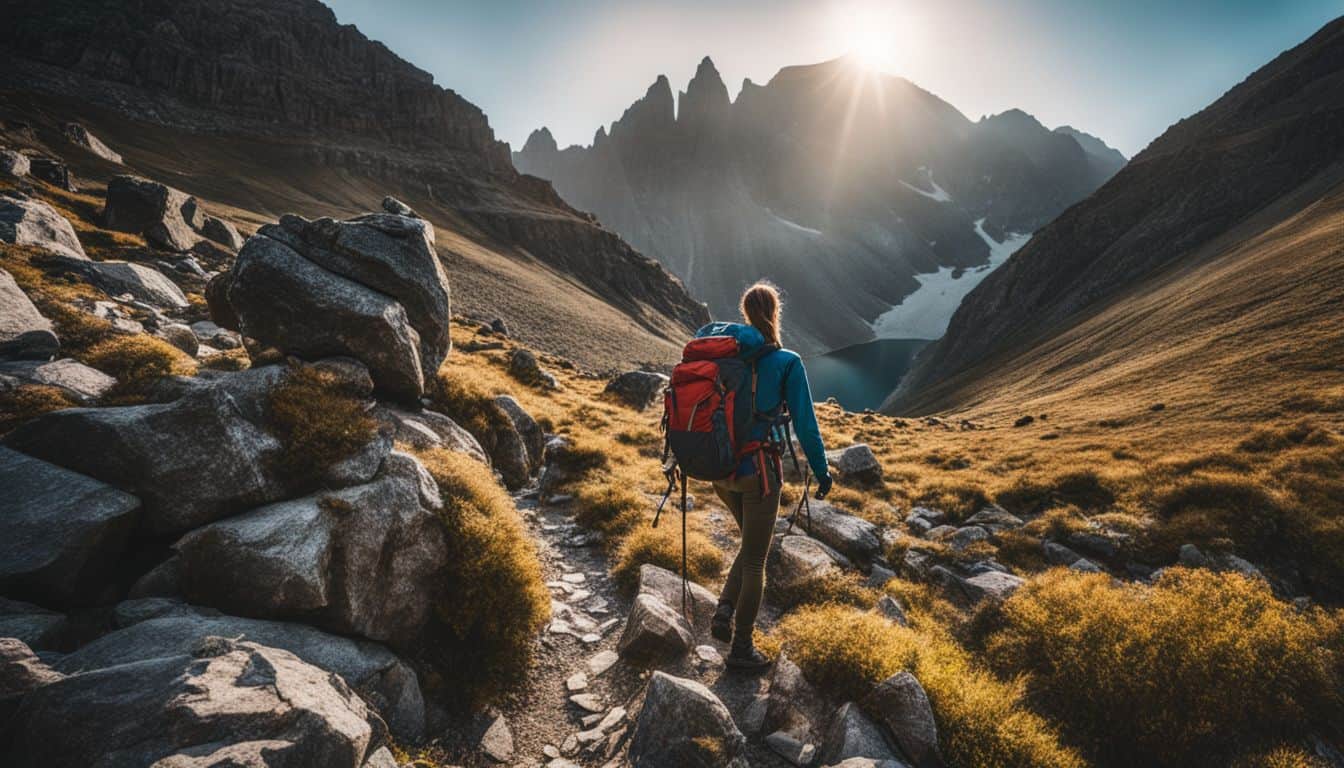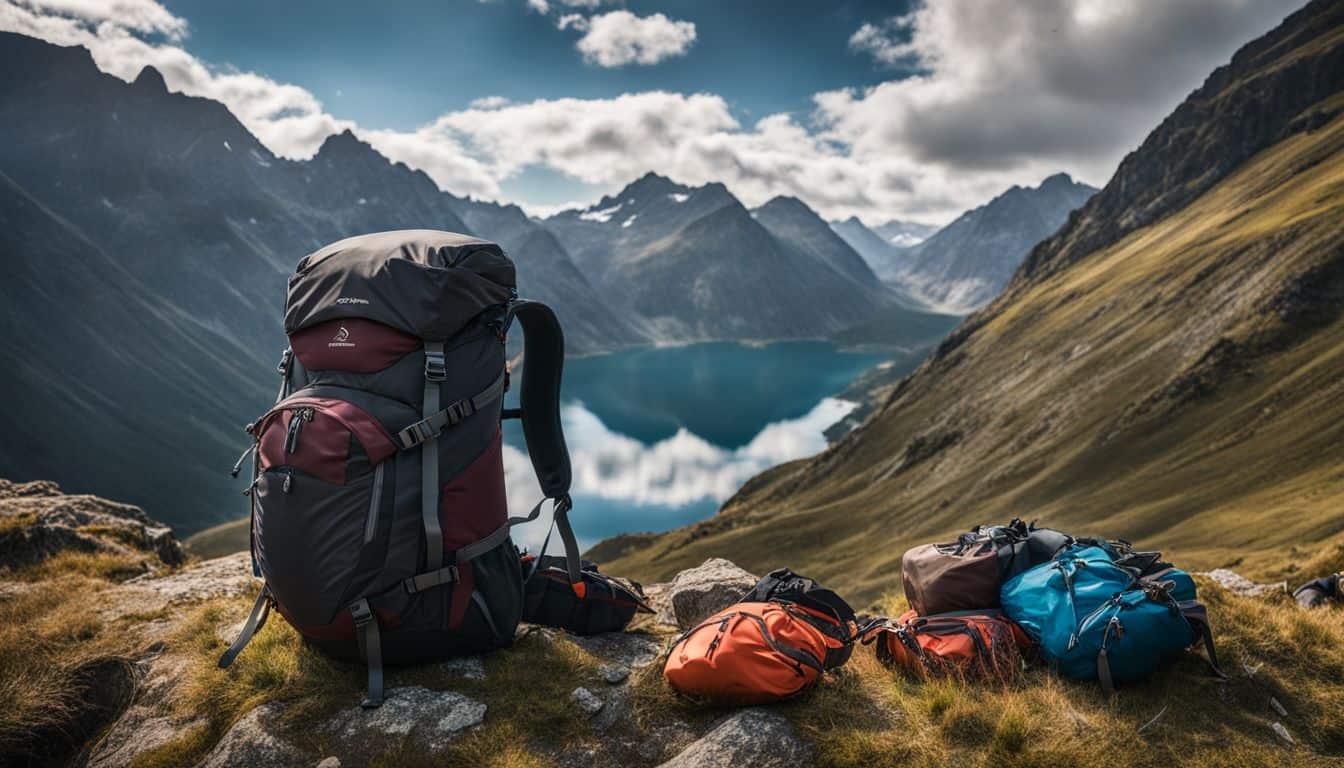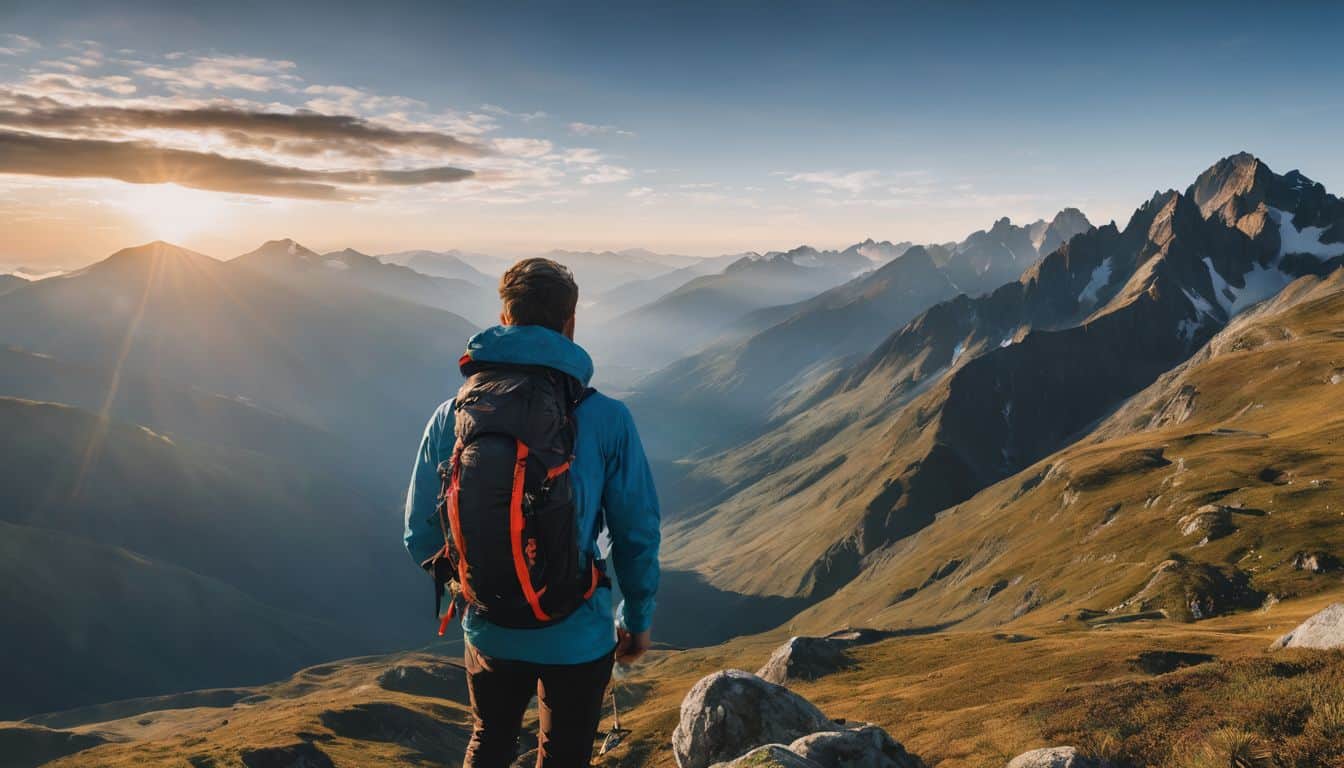Lightweight backpacking has become increasingly popular as hikers seek to reduce pack weight and increase comfort on the trail. By carefully selecting ultralight gear, you can significantly reduce your base weight without sacrificing safety or essential items. This guide will cover the key components of a lightweight backpacking setup and offer tips for transitioning to an ultralight approach.

The “Big Three”: Shelter, Sleep System, and Backpack
When lightening your load, focus first on the three heaviest items:
- Shelter: Consider ultralight tents, tarps, or bivy sacks weighing under 2 pounds. These options provide adequate protection while dramatically reducing weight. For example, a lightweight tarp setup can weigh as little as 8 ounces, compared to 3-4 pounds for a traditional tent.
- Sleep System: Opt for a lightweight sleeping bag or quilt (under 2 pounds) paired with an ultralight sleeping pad. Down-filled bags offer an excellent warmth-to-weight ratio, while quilts can be even lighter by eliminating the underside insulation and zipper.
- Backpack: Choose a pack under 2-3 pounds with a capacity of 40-50 liters for most trips. Ultralight packs often feature minimalist designs, removing excess padding and features to save weight.
By upgrading these three items alone, you can often reduce your base weight by 5-10 pounds or more, making a significant difference in your overall comfort and hiking efficiency.
Other Key Lightweight Gear
Beyond the “Big Three,” consider lightening other essential items:
- Cooking System: Use an ultralight stove and titanium pot, or consider no-cook meals. Alcohol stoves or canister stoves can weigh just a few ounces. For example, the popular BRS-3000T stove weighs only 25 grams and can boil water efficiently. Pair this with a titanium pot that doubles as your eating vessel to further reduce weight. No-cook meals, such as cold-soaking dehydrated foods, can eliminate the need for a stove altogether, saving significant weight and space.
- Water Treatment: Lightweight filters or chemical treatments instead of heavy pump filters. Options like the Sawyer Squeeze or Aquamira drops weigh mere ounces. The Sawyer Squeeze, weighing just 3 ounces, can filter up to 100,000 gallons of water. Chemical treatments like Aquamira drops are even lighter and take up minimal space, making them an excellent backup or primary treatment method for ultralight hikers.
- Clothing: Focus on versatile, quick-drying synthetic or wool layers. Avoid cotton and pack only what you need for the conditions you’ll face. Merino wool base layers offer excellent temperature regulation and odor resistance, while lightweight synthetic mid-layers provide warmth even when wet. A lightweight rain jacket can serve as both weather protection and an extra warm layer.
- Footwear: Trail runners instead of heavy boots for most conditions. They’re lighter, dry faster, and many hikers find them more comfortable for long distances. Popular models like the Altra Lone Peak or Brooks Cascadia offer excellent traction and cushioning while weighing less than half of traditional hiking boots. The faster drying time of trail runners can also help prevent blisters and foot issues on multi-day hikes.
Tips for Going Ultralight
- Analyze every item – ask if it’s truly necessary or if there’s a lighter alternative. For instance, consider replacing a heavy flashlight with a lightweight headlamp, or swapping out a bulky sleeping bag for a lighter quilt.
- Choose multi-purpose gear when possible. For example, trekking poles can double as tent supports. A bandana can serve as a washcloth, pot holder, and emergency bandage. A smartphone can replace a separate camera, GPS device, and guidebook.
- Repackage food and toiletries into smaller containers to reduce weight and bulk. Transfer sunscreen, soap, and other liquids into tiny dropper bottles. Repackage food into resealable bags, removing excess packaging and combining ingredients for meals.
- Learn and practice ultralight skills to rely less on gear. This might include techniques for staying warm with less insulation or navigating without heavy guidebooks. For example, master the art of layering clothes efficiently, learn to read natural signs for navigation, or practice building a fire in various conditions to reduce reliance on a stove.
Finding the Right Balance
While going ultralight can enhance your hiking experience, it’s important to find the right balance for your needs and comfort level. Don’t sacrifice safety or push beyond your skill level just to save a few ounces. Start by making gradual changes and test your gear on shorter trips before committing to a minimalist setup for longer adventures.
Lightweight backpacking isn’t just about the summer months! For tips on adapting your gear and techniques throughout the year, check out our guide on seasonal backpacking. This resource will help you adjust your lightweight setup for different weather conditions and challenges.
Safety Considerations
While reducing weight is important, safety should always be your top priority. If you’re planning to hike solo, be sure to review our solo backpacking safety guide. It provides essential tips for staying safe while enjoying the solitude of lightweight solo hiking.

Conclusion
The goal of lightweight backpacking is to enhance your outdoor experience by reducing physical strain and allowing you to cover more ground with less effort. With careful planning and the right gear choices, you can achieve a comfortable and safe ultralight setup tailored to your hiking style and preferences.
By embracing lightweight backpacking principles, you’ll not only reduce the strain on your body but also potentially open up new possibilities for longer hikes, faster travel, and a deeper connection with the natural world around you.
As you venture into different regions with your lightweight gear, it’s crucial to be aware of local customs and etiquette. Our article on backpacking and cultural etiquette offers valuable insights on respecting local cultures and environments during your travels.

Leave a Reply